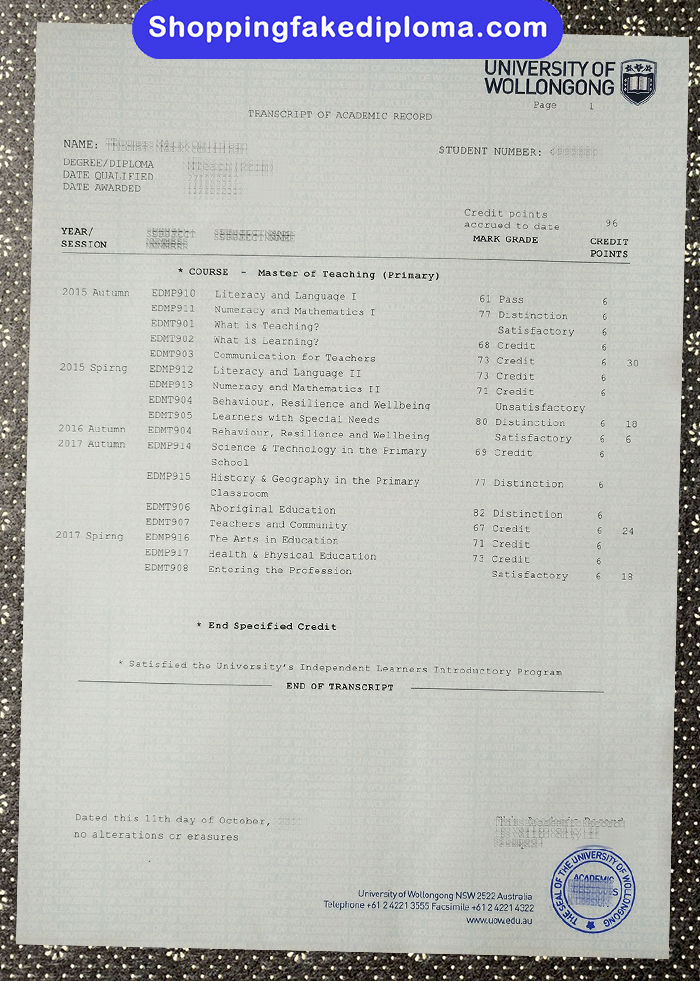
The UOW transcript is a comprehensive document that provides a detailed record of a student’s academic journey. It goes beyond a mere list of courses taken; it includes grades and credits earned, offering valuable insights into a student’s academic performance. In this article, we will navigate the UOW transcript and provide a guide to understanding the grading system and credit system employed by the University of Wollongong.
Grading System:
The UOW grading system uses a scale of grades to assess student performance. The grades range from High Distinction (HD), which represents outstanding achievement, to Fail (F), which indicates unsatisfactory performance. The grading system also includes distinctions for different levels of achievement, such as Distinction (D), Credit (C), and Pass (P). Each grade carries a specific numerical value, which is used to calculate the Grade Point Average (GPA) – an important indicator of a student’s overall academic performance.
Grade Point Average (GPA):
The Grade Point Average (GPA) is a numerical representation of a student’s academic performance based on the grades earned in each course. The UOW calculates the GPA by assigning each grade a corresponding numerical value and then calculating the average across all courses. The GPA serves as a benchmark for academic success and is often considered by employers and educational institutions when evaluating candidates.
Credit Points:
UOW uses a credit point system to track a student’s progress towards completing their degree requirements. Each course is assigned a specific number of credit points, which represents the workload and level of study. Typically, a full-time student would complete 48 credit points per academic year. The credit point system allows for flexibility in course selection and enables students to customize their academic journey based on their interests and goals.
Course Codes and Descriptions:
The UOW transcript includes course codes and descriptions for each completed course. The course code represents the unique identifier for the course, while the description provides an overview of the course content, objectives, and learning outcomes. Understanding these codes and descriptions can help students and employers gain insights into the breadth and depth of a student’s academic experiences.
Prerequisites and Corequisites:
The UOW transcript may also include information about prerequisites and corequisites for certain courses. Prerequisites are courses that must be successfully completed before enrolling in a particular course. Corequisites are courses that must be taken concurrently with another course. This information helps to ensure that students have the necessary foundation and knowledge to succeed in advanced courses.
Electives and Major/Minor Requirements:
The UOW transcript provides information about elective courses and requirements for major or minor programs of study. Electives are courses that students can choose freely based on their interests, allowing for a well-rounded education. Major and minor requirements specify the courses that students must complete to specialize in a particular area of study. These requirements help students develop expertise in their chosen field.
Academic Progress and Graduation:
The UOW transcript serves as a tool to track academic progress and eligibility for graduation. By reviewing the transcript, students can ensure they are meeting the requirements for their chosen UOW degree program. It provides a clear overview of the courses completed, grades earned, and remaining requirements. Understanding the transcript is essential for students to stay on track and successfully complete their UOW degree.
The UOW transcript is a comprehensive document that provides valuable information about a student’s academic performance and progress. Understanding the grading system, GPA calculation, credit point system, and other elements of the transcript is essential for students, employers, and educational institutions. By navigating the UOW transcript effectively, students can gain insights into their academic journey, make informed decisions about their education, and showcase their achievements to potential employers and further educational opportunities.